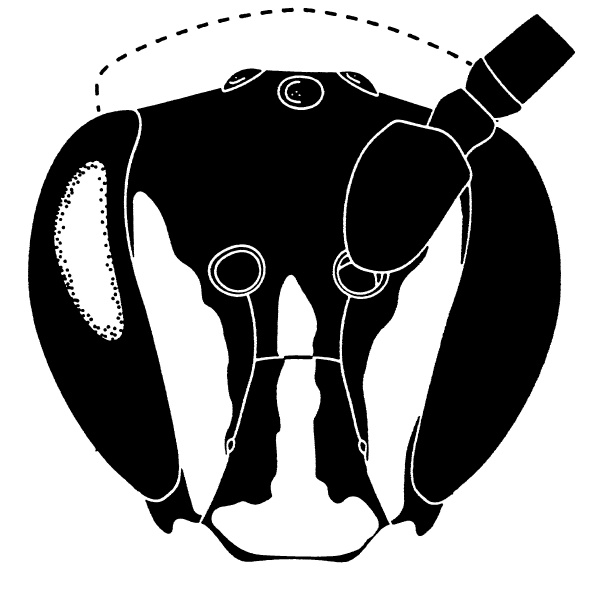Hylaeus in Hawaii

Hylaeus in Hawaii |

|
Hylaeus anomalusIslands: OahuLocations: Waianae Habitats: Montane mesic and wet forest Plants: Acacia, Psychotria Xerces: Hylaeus anomalus is a large bee endemic to the island of Oahu in Hawaii. It is easily recognizable due to the red head of the female and orange base of the male abdomen. It was formerly relatively commonly found in the leeward Koolau Mountains above Honolulu, but has not been recorded since the 1930s. The reasons for its decline are unknown. Species Profile 
Insects of Hawaii: Medium-sized bees with clear to smoky wings; scutum with unusual dense punctation less than 1 pit width apart; unique long, pale yellow-brown, plumose hair on mesosoma; may have some red on metasomal terga; and punctured terga. Male with yellow facial mark only at apex ofclypeusor extended at sides in a narrowing stripe above antennal sockets; clypeal mark transverse and apical, or extended dorsally to the supraclypeal area. Face marks similar to H. gliddenae, from which it differs by the mostly black metasoma and the shape of the scape and terminalia. Fresh male specimens are said to have Tl-3 orange red at base. Female with unique red head, antennae, and T1. Colors of the integument and pubescence are based on old specimens. Fullaway (1918) describes the male with orange red legs and basal abdominal terga, but specimens we have seen have the legs yellowish brown and the terga reddish brown or without a distinct red color on the abdomen. The marks of the male are yellow; those of the female are ivory. Although most species with punctured terga have the scutum punctation relatively close, this species has the most extreme development of this character. Insects of Hawaii Volume 17 
UH/DOD: This remarkable species was relatively common in early collections from the eastern Koolau range, through about 1930 (Daly and Magnacca 2003). Two specimens recently discovered in the University of Hawaii Manoa Insect Museum, one from Tantalus in 1977 and one from Aiea in 1978, are the only known collections since then. On the last Oahu field day of this survey, one male and one female were collected around flowers of Acacia koa on Kamaileunu ridge, between Makaha and Waianae valleys (Figure 5). This is the first record of the species from the Waianae range, and an indicator of how long these species can persist without being detected. Virtually no koa flowering was observed all year on either Oahu or Hawaii until this last visit, which may perhaps explain why certain species were in low abundance. Most available collections of H. anomalus appear to be from October to February, suggesting that the lack of recent collections may also be related to timing of effort (most collecting has been done in the summer, when other species are more abundant) in addition to their inherent rarity. Hylaeus near military lands 
Other: |

|